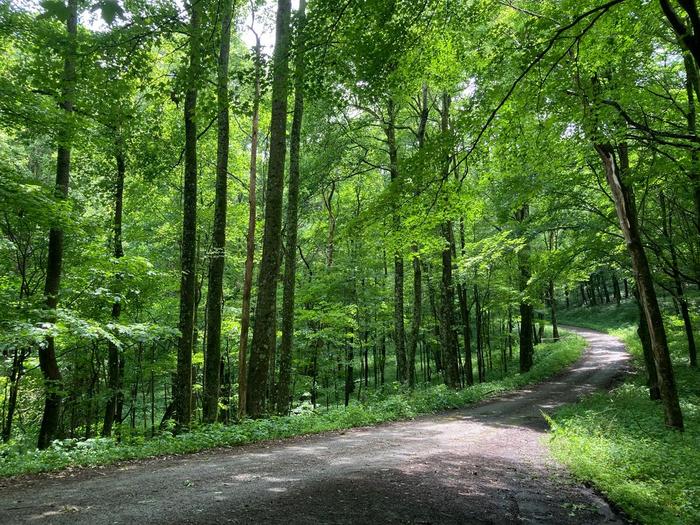West Virginia University biologists will tap local eighth graders for help on important research studying what happens when acid rain stops falling.

Credit: WVU Photo/Edward Brzostek
West Virginia University biologists will tap local eighth graders for help on important research studying what happens when acid rain stops falling.
Years of this environmental phenomena in the eastern U.S. have led to nitrogen pollution in streams and waterways. However, it’s also helped trees grow and microbes capture carbon from the atmosphere. Edward Brzostek, associate professor in biology at the WVU Eberly College of Arts and Sciences, has been working in the Fernow Experimental Forest in Tucker County studying the effects of acid rain on the region’s forests and watersheds.
A recent five-year award from the National Science Foundation’s Long Term Research in Environmental Biology program will support continued study on the topic by WVU, the U.S. Forest Service and local students.
“Until the Clean Air Act, we were essentially simulating a whole continental-scale nitrogen fertilization experiment,” Brzostek said. “We were dumping nitrogen on all these ecosystems, and that led to some good things and some bad things. One good thing was the trees grow faster because trees need nitrogen. The other is the soil carbon increased. This is because when the trees don’t need as much nitrogen, they don’t send as much carbon below ground to fuel microbial decomposition. This leads to a decline in decomposition. We get faster growing trees that store more carbon.”
Ecosystems can only hold so much nitrogen, so the excess goes into the water and leads to water quality problems downstream.
Brzostek and his team, including Ember Morrissey, associate professor of environmental microbiology, and Justin Mathias, assistant professor of biology, will involve eighth graders in Tucker County in the project. Many of those students live adjacent to the forest but have limited knowledge of the research conducted there. Additionally, 20% live below the poverty line and may lack a direct pathway to STEM.
“We’ll do field trips with them,” Brzostek said. “We’ll take them out to the Fernow. We’ll design in-class exercises, we’ll have them collect actual data and then we’re going to bring them to campus and they’ll get to meet faculty.”
Ongoing student involvement at the University level has enhanced the project’s success. Twenty-eight undergraduates, 16 graduate students and three postdoctoral associates have already been involved in the Fernow research, according to Brzostek.
“It’s been a really strong training ground for graduate students and building the next cohort of scientists,” he said.
The 4,700-acre Fernow Experimental Forest is a vital study site because, over time, the forest’s various experimental watersheds have undergone different management practices, which created a variety of different ecosystems. Five of these will be tracked as they recover. One watershed that was experimentally acidified for 30 years under the leadership of William Peterjohn, professor of biogeochemistry, global change, nutrient cycling, forest ecosystems and soil microbiology, will be of particular interest.
“Understanding the impact of chronic changes in the environment — like acid rain — requires long-term observations and experiments,” Peterjohn said. “I’m pleased that Dr. Brzostek and his colleagues have been funded to continue the legacy of long-term research at the Fernow that is focused on understanding how forests respond to a changing environment.”
In this next generation of research, the group will monitor what happens without the acid rain.
“We looked at what happens when you acidify a whole watershed,” Brzostek said. “Now, we’re looking at the recovery. We’re not dumping nitrogen anymore. Is this good? Are we going to keep these good things and lose the bad things? Or is the carbon that we’ve sequestered going to go away?”
Researchers will look at four different components of the ecosystem: stream water, soil microbes, trees and soil carbon. They hypothesize the soil microbes will respond quickest because microbes have short lifespans.
“Trees are different,” he said. “There’s some evidence the presence of nitrogen shifts which trees species will grow, so you’re setting the stage for how the ecosystem is going to respond in the future.”
Brzostek expects as nitrogen becomes more limiting, the trees will start relying on fungi and soil microbes more. They’ll also send more carbon below ground to get nitrogen, which will fuel decomposition and potentially lead to soil carbon losses over time as the greenhouse gas is released back into the atmosphere.
“In 20 years, the climate is going to be warmer and so is the forest,” Brzostek said. “There’s not going to be as much nitrogen dumped on it and what we might have is a lot of soil carbon that’s sitting around, really vulnerable to loss.”




